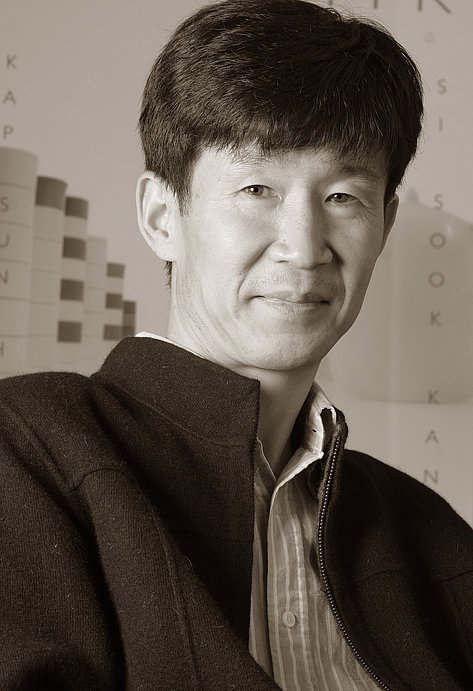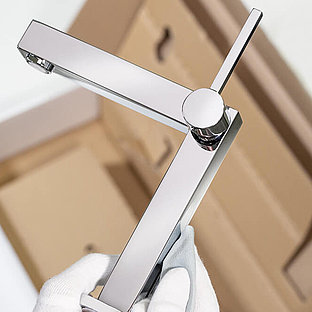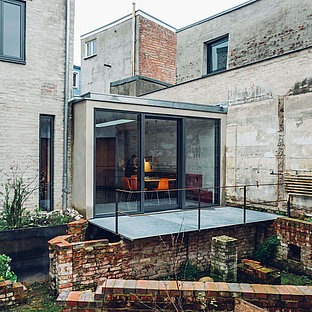As delicate as celadon - A precious glaze is taking the world by storm
3 min readIn those days, dishes glazed with celadon were even said to change colour if they were used to serve poisoned food. Unfortunately, no one today can testify whether this was true or not. However, one thing is certain: one of the oldest celadon bowls imported to Europe is on display at the Hessian State Museum in Kassel and dates back to the 15th century. And celadon glaze is still being produced today; one of the artists doing so is the ceramicist, Professor Kap-Sun Hwang from Seoul. In his ‘QI’ series of bowls for the porcelain manufacturing company Fürstenberg, he applied this unique glazing technique to porcelain for the first time.
How did you become interested in ceramics?
I was already fascinated at an early age by the great variety of rocks and types of sand. That probably triggered my interest. So, I began my studies in ceramics at Seoul National University in 1983 and I graduated in 1986. I was also deeply impressed by the works of ‘Gruppe 83’, a group of German ceramicists who staged an exhibition in Seoul in 1985. From then on, it was my dream to study abroad, which fortunately I was able to realise.
What fascinates you about working with ceramics?
The unique expression, the reflected light that’s as bright as sunshine, as well as the hardness and surface qualities of the physically and chemically compounded materials are very special to me. Apart from that, pottery is a low-level difficulty craft. It’s like learning to play an instrument –you start from scratch and then learn more and more, until you develop perfect mastery. This has a special attraction for me.
You soon began to specialise in glazing. A well-known type of glazing is celadon, which originally comes from China. What is its history?
Traditionally, the Chinese prefer jade. In particular, blueish jade was very popular and in great demand. As celadon is very similar in colour to jade, this could have been the reason for creating celadon glaze. The name originates from the French pastoral novel L’Astrée by Honoré d’Urfé (1568-1625). The name of its main character is Céladon, and he wears a green garment, which is a similar colour to that of modern celadon.
Celadon glaze is regarded as extremely valuable. Why?
Because its production is not very complicated and the materials aren’t particularly expensive, there must be other reasons as to why celadon is so precious. I think that one main reasons for its attractiveness is its colour. It’s bright and looks similar to both water and the sky; it’s clear, natural, deep and elegant. That’s why this glaze has been so abundantly praised for its beauty through the ages. What’s more is that there’s no other glaze so highly valued in so many places, in so many cultures and over such a long time. Its thousand-year-old history is another reason for its popularity. And its popularity continues to this day. Many ceramicists, myself included, work with the glaze, use it in their work and develop it further.
You made celadon glaze for your ‘QI’ series of bowls for the Fürstenberg porcelain company. What does the name mean and where did your inspiration for it come from?
‘QI’ is originally a Chinese word which means ‘energy’. I was inspired by a flower delicately opening its petals. My aim was to industrially produce the traditional celadon glaze with all of its delicacy and transparency and to combine it with brightly-coloured Fürstenberg porcelain. It was the very first time this glazing technique had been applied to porcelain. The final outcome was a set of five bowls; on the inside they shimmer in a delicate blueish green, while on the unglazed outer surface they have a velvety touch.
What are you working on at the moment? What are your future projects?
Most recently, I’ve been developing glazes using strontium carbonate, which I’m planning to use for my new models. I also intend to continue working on the celadon glaze with my students. We were inspired by the fact that celadon was produced in China partly as a substitute for jade, and we plan to utilise the effect of quartz supersaturation. So there is a lot to do!
What is precious for you personally – in your life and in the area of your profession?
I used to be very curious and interested in spirituality, although I didn’t understand everything. Today, I work hard and spend the rest of the day dreaming. And in doing so, I always try to observe myself. I often say to my students: “I make these types of bowls and those types of bowls. However, the main aim is not to create these bowls, but rather to create yourself by carrying out this work.” And that’s much easier said than done. I often find it difficult to put this statement into practice myself. On the whole, I can say that for me, both in my life and in my profession, what’s precious is the ‘personality’ created by my environment.




